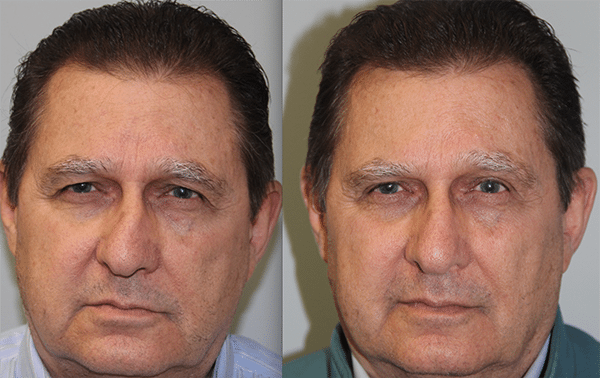What’s the Difference Between Rhinoplasty and Septoplasty?

If you have aesthetic or functional concerns about your nose, understanding the difference between a rhinoplasty and a septoplasty procedure can help make sure you choose the best treatment for you. Both surgical procedures are meant to target issues with the nose but can have very different goals. Dr. Steven Daines offers both procedures to his patients so you can improve your quality of life and increase your self-confidence. If you have concerns with your nose and are seeking a solution, make sure you understand the differences between rhinoplasty and septoplasty before moving forward with a decision.
What is Rhinoplasty?
Rhinoplasty is a general term for a surgical procedure that allows patients to correct their nasal size, shape and symmetry for a more balanced appearance. If you have cosmetic concerns regarding your nose, including nasal asymmetry, a nasal hump or depression on the bridge, an enlarged or droopy nasal tip, or large or wide nostrils, rhinoplasty may be the appropriate solution for your concerns.
Rhinoplasty can be completed as either a closed or open procedure, depending on what you decide on with your doctor. An open procedure will yield a very fine scar across your columella, the bridge of tissue located between the nostrils. Scarring is minimal and naturally fades to an unnoticeable thin line once recovery is complete. Closed rhinoplasty does not result in any external incision, but may not be an option for every patient.
Since each patient’s cosmetic concerns are different, each rhinoplasty procedure is different and is uniquely tailored by Dr. Daines to address your specific nasal anatomy. Some procedures may involve the use of cartilage grafts that can be taken from other parts of the nose, ear, or even a rib in some cases.
What is Septoplasty?
Septoplasty is a surgical procedure that targets functional concerns within the nose, including correcting a crooked or deviated septum. A deviated septum can be present since birth or may be the result of a previous nasal injury. If you have difficulty breathing out of one or both of your nostrils or have suffered physical trauma to the nose that has impacted your ability to breathe, then you may be a candidate for a septoplasty to correct your deviated septum and enhance your breathing.

A septoplasty can be performed as a closed or open procedure depending on the complexity of your septal deviation. When performed as a closed operations, a small incision is made in the inner lining of the nose, called the mucosa, to provide access to the cartilage and bone of the septum. Depending on the specifics of each patient’s needs, parts of the septum may then be removed entirely, trimmed and repositioned, or completely reconstructed with grafts.
Rhinoplasty vs. Septoplasty
If you are unsure whether rhinoplasty or septoplasty is the better choice to address your concerns, schedule an appointment with Dr. Daines, a double board certified facial plastic surgeon who has expert knowledge and experience in nasal surgery. If you have a visibly crooked nose and a deviated septum that impacts your ability to breathe, a septoplasty with elements of a rhinoplasty can correct both your functional and aesthetic concerns in one combined procedure. The main concern of a septoplasty is to fix a deviated septum and generally leave the external shape of the nose untouched. However, it is important to be aware that but when a septoplasty is performed it can be a useful opportunity to correct a large or bulbous nasal tip, a dorsal hump, or other aesthetic concerns while the patient is already undergoing surgery.
Whether you undergo a rhinoplasty, septoplasty, or both procedures, you should be prepared to spend time away from work while your body heals and recovers. Most patients take 5-7 days off work. Most swelling resolves within the first several weeks although a degree of minor swelling can persist for the first 6-12 months after a rhinoplasty. Nasal splints and stitches may be used after the procedure but are typically removed after one week.
Both procedures are commonly performed under general anesthesia, but you and Dr. Daines may also opt for local anesthesia with intravenous sedation if only minor work needs to be done on your nose. Both treatment options are also typically performed as outpatient procedures so that you can return home the same day as your surgery. The duration of both procedures is typically less than three hours and will ultimately depend on the number of concerns being targeted during the surgery.
If you have a deviated septum or other cosmetic nasal concerns, call Daines Plastic Surgery today at 949-397-6499 to schedule a consultation with Dr. Daines. Together, you will work with Dr. Daines to identify the best treatment plan for your concerns. Dr. Daines can answer any questions you have about either procedure to ensure you head into your surgery well-informed about your results and confident with your treatment.



